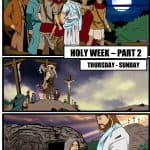Welcome to our second Bible study covering the events of Holy Week. This Bible study will examine the events from the second part of the week leading up to Jesus’ death, crucifixion, burial, and resurrection from the dead. This study continues from our Holy Week Part 1 Bible lesson.
This lesson relates to pre-teens and teens.
DOWNLOAD THE FREE PRINTABLE LESSON

BIBLE STUDY NOTES FOR TEENS
BACKGROUND TO THE PASSAGE
Day-to-day breakdown of the week.
Palm Sunday: Jesus enters Jerusalem on a donkey, with crowds waving palm branches and proclaiming Him king.
Monday: Jesus cleanses the temple.
Tuesday: Jesus teaches in the temple, confronts the religious leaders, and teaches on the end times.
Wednesday: Jesus remains in seclusion while Judas agrees to betray him for 30 pieces of silver.
Thursday: Jesus shares the Last Supper with His disciples, washes their feet, and prays in the Garden of Gethsemane.
Friday: Jesus is arrested, tried, and crucified, fulfilling the Old Testament prophecies, and atoning for sin.
Saturday: Jesus’ body is in the tomb, while His followers mourn, and the soldiers guard His tomb.
Easter Sunday: Jesus rises from the dead, conquering sin and death.
KEY POINTS
1. JESUS LIVED A PERFECT LIFE – JOHN 19:4
The Roman soldiers arrested Jesus in the Garden of Gethsemane and took Him to the Roman governor, Pilate. Pilate was astonished to find no fault in Jesus. He publicly testified that he saw no fault in Jesus and sent Him back to the religious leaders, who demanded His death again. Pilate then took water and washed his hands before them, saying, “I am innocent of this man’s blood.”
Jesus was indeed perfect and blameless. He was the only one who could perfectly fulfil the requirements of the law and be an atoning sacrifice for sins. As Isaiah 53:7-9 says, “…He is brought as a lamb to the slaughter…” The perfect Lamb of God had come to earth to bring us salvation.
In the Old Testament, the sacrificial lamb was to be spotless and without blemish. This represented the perfect life that God desired His people to live. Jesus lived a sinless life and was obedient in all aspects. He lived according to the Father’s will. He didn’t lie or cheat and was always truthful when speaking of others or Himself.
Jesus’ perfect life is essential for us because, through His sacrifice on the cross, we can receive forgiveness for our sins and reconcile our relationship with God. Jesus lived a sinless life yet was unjustly arrested, mocked, and tortured by those who should have treasured Him most, ultimately leading to His crucifixion at Calvary, all so that our sins could be forgiven.
It has truly been said, “Jesus lived the life we couldn’t live and died the death we should have died.”
2. JESUS’ DEATH ON THE CROSS – MATTHEW 27:45-54
Although Jesus was blameless and lived a sinless life, He chose to die for those of us who are guilty and in need of forgiveness.
Romans 5:8 says, “But God demonstrates His own love for us in this: While we were still sinners, Christ died for us.” This verse shows us that Jesus died for us not because we earned it or were good enough but because of His love for us, even when we were still in our sins.
Jesus’ death on the cross was a sacrifice for our sins. He took the punishment we deserved; through His death, we can be forgiven and made right with God. This is the gospel’s message and is essential to our salvation.
The cross was a terrible punishment that should remind us of the true nature of our sins. The Roman crucifixion was so brutal and violent that it was reserved for the most heinous criminals. Crucifixion involved being nailed or tied to a cross, often causing slow and excruciating pain. Many would die from shock, dehydration, asphyxiation, or heart failure due to the strain on their body and suffering. Roman authorities sought to make a public example with crucifixions, as those crucified were placed in high-traffic areas to be seen by all.
By taking on our sins and submitting Himself to this horrific punishment, Jesus demonstrated His incredible love for us. Something we don’t deserve but which He freely and willingly gave out of His perfect love. Seeing how much He suffered highlights how serious sin is in God’s eyes and how far God went to redeem us.
The cross serves as a reminder of the costly price of our sins. It should cause us to take every sin seriously, no matter how small it may seem at first glance.
1 Peter 2:24 says, “He Himself bore our sins in his body on the cross, so that we might die to sins and live for righteousness; by His wounds, you have been healed.”
3. THE RESURRECTION OF JESUS – 1 CORINTHIANS 15:14-19
The resurrection of Jesus demonstrates that Jesus has power over sin and death. Jesus defeated sin by living a perfect life and taking on our sins upon Himself. Something that no other person has ever done or could do.
When Jesus died, He was buried in a tomb and guarded by Roman soldiers who were ordered to make sure Jesus’ body remained in the tomb. On the third day, however, an angel appeared at the tomb and rolled away the stone from its entrance. After this momentous event, many people saw the risen Lord, including Mary Magdalene, Peter, John and many others (1 Corinthians 15:3–8).
Jesus’ resurrection is essential for several reasons. It shows us that God’s promises are true, that we can trust in Him even when everything seems hopeless, that our faith is not in vain, and that it gives us hope for eternal life after death.
Apart from Christ’s resurrection, there would be no hope or redemption for mankind because our sins would remain unforgiven. As Paul said in 1 Corinthians 15:14-19, “If Christ has not been raised, our preaching is useless and so is your faith…. For if the dead are not raised, then Christ has not been raised either. And if Christ has not been raised, your faith is futile; you are still in your sins.”
The resurrection of Jesus proves that God’s power is greater than death itself. It shows us that death does not have the final word because God can conquer it. Jesus’ resurrection reveals God’s sovereignty over all things and demonstrates His ultimate victory over sin and death.
4. SHARE THE MESSAGE OF THE RISEN SAVIOUR – JOHN 20:11-18
The conversation between Jesus and Mary Magdalene after His resurrection reminds us of our calling to share the gospel’s message with others. In John 20:17, Jesus tells Mary, “Go and tell my brothers to go to Galilee; there they will see me.” This passage shows us that Jesus wanted Mary to share the news of his resurrection with the disciples, and it serves as an example for us to share the message of the gospel with others.
We are called to be witnesses of the resurrected Christ, just as Mary was in the garden. Acts 1:8 says, “But you will receive power when the Holy Spirit comes on you, and you will be my witnesses in Jerusalem, and in all Judea and Samaria, and to the ends of the earth.” This passage reminds us that we have been empowered by the Holy Spirit to share the gospel with others, no matter where we go or who we meet.
We have a wonderful message: Jesus is alive – we have a risen Saviour! This incredible news brings joy, comfort, and hope to all who believe.
Like Mary, we should be quick to share the wonderful news of Jesus with others. Let us be faithful witnesses of our risen Saviour as we tell others about the love and power of Jesus Christ.
Let’s go out into the world and share the good news of our great Saviour, who has defeated sin and death once and for all! Let’s proclaim to all that Jesus lives so they may also have hope in Him and be saved.
CONCLUSION
The resurrection of Jesus proves that God’s power is greater than sin and death. We have been called to proclaim the good news of salvation through Jesus. As witnesses of the risen Saviour, let us faithfully go out into all corners of the world and proclaim this glorious message so that many may come to believe in Him and live eternally!
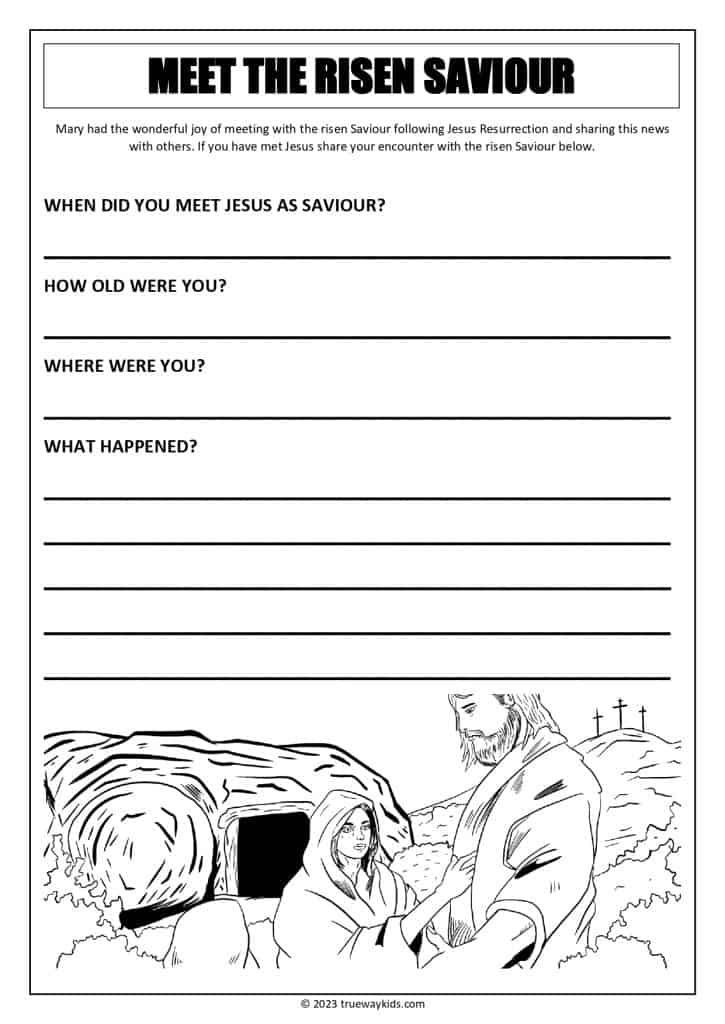

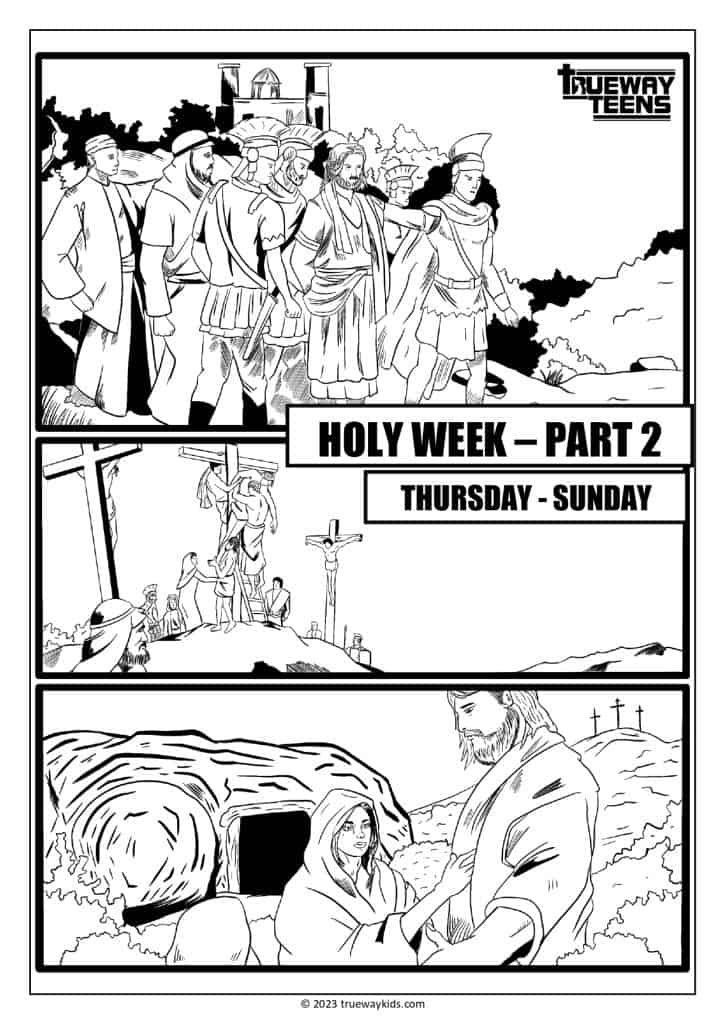
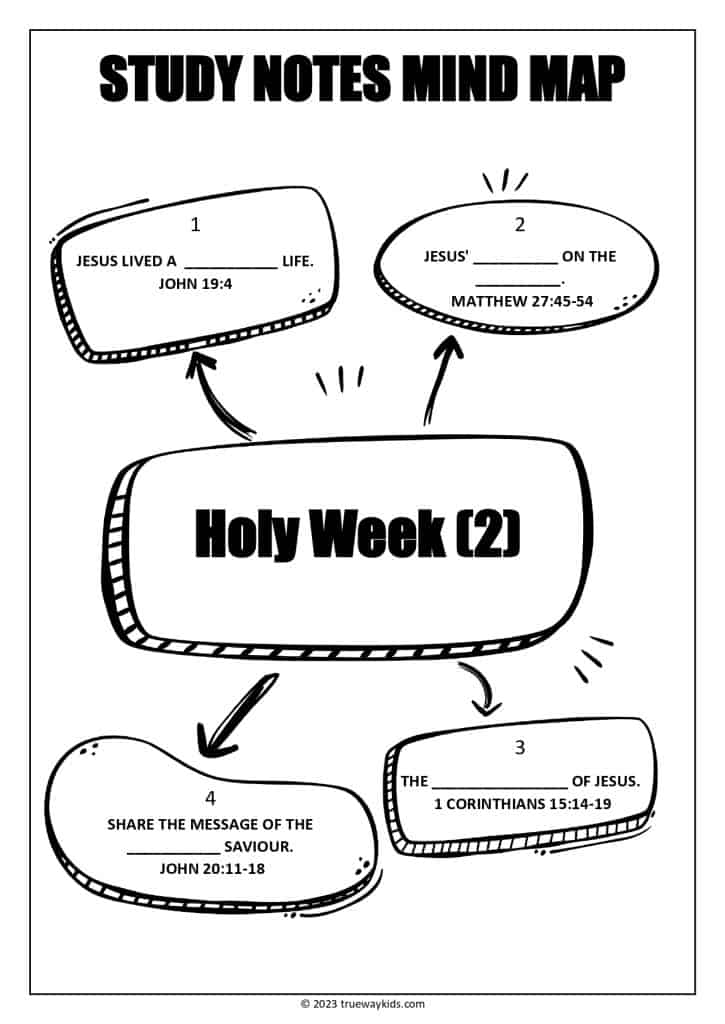
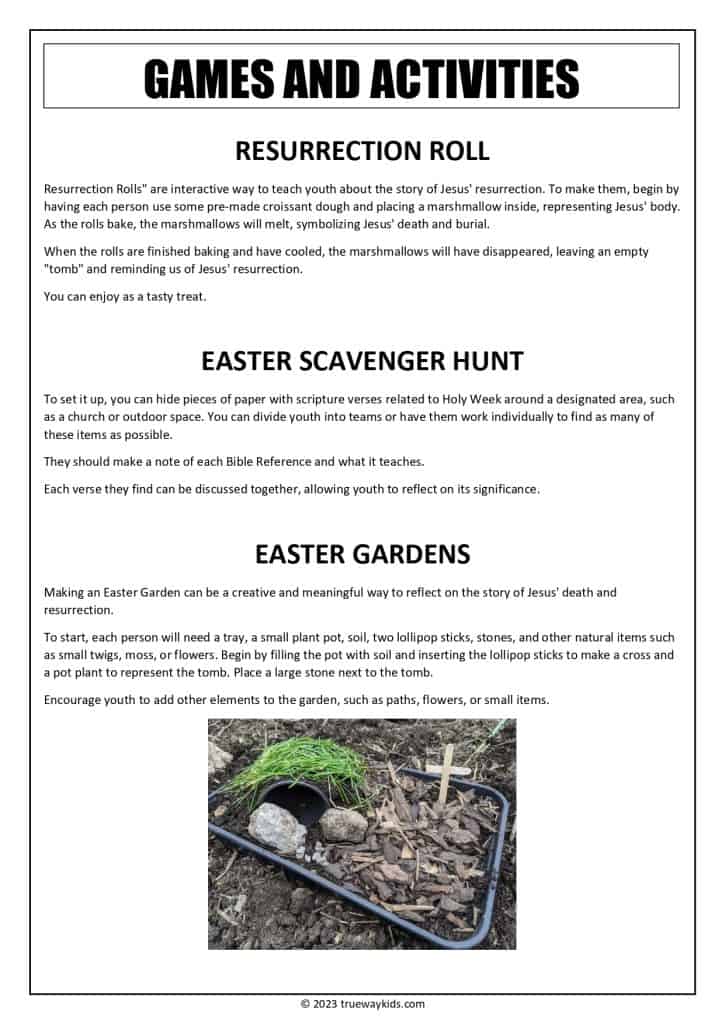
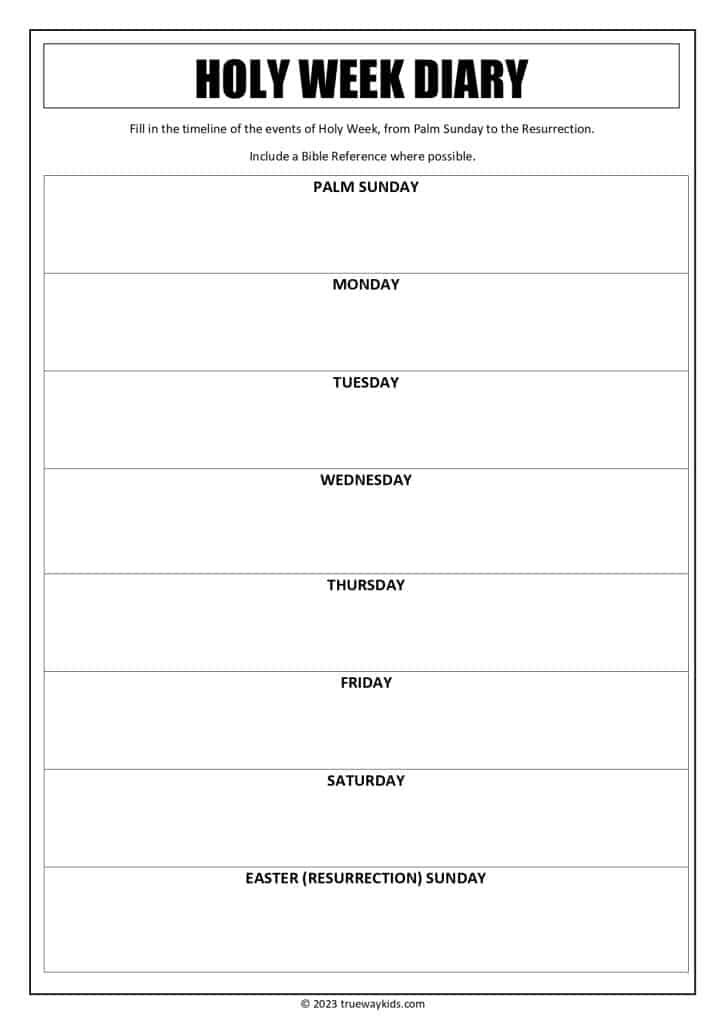
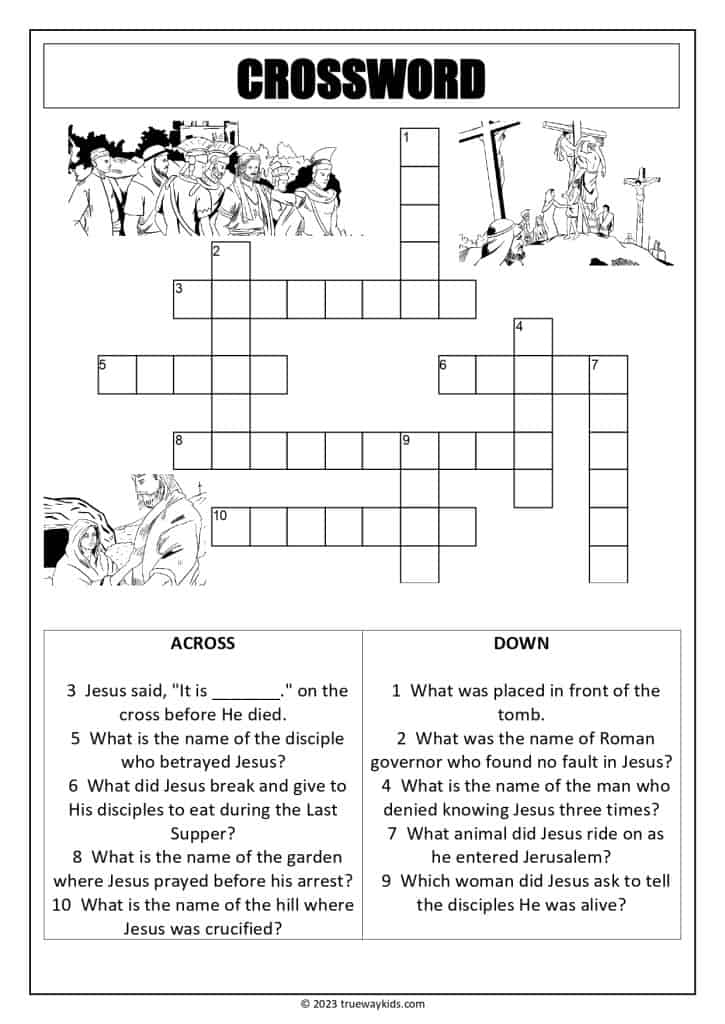
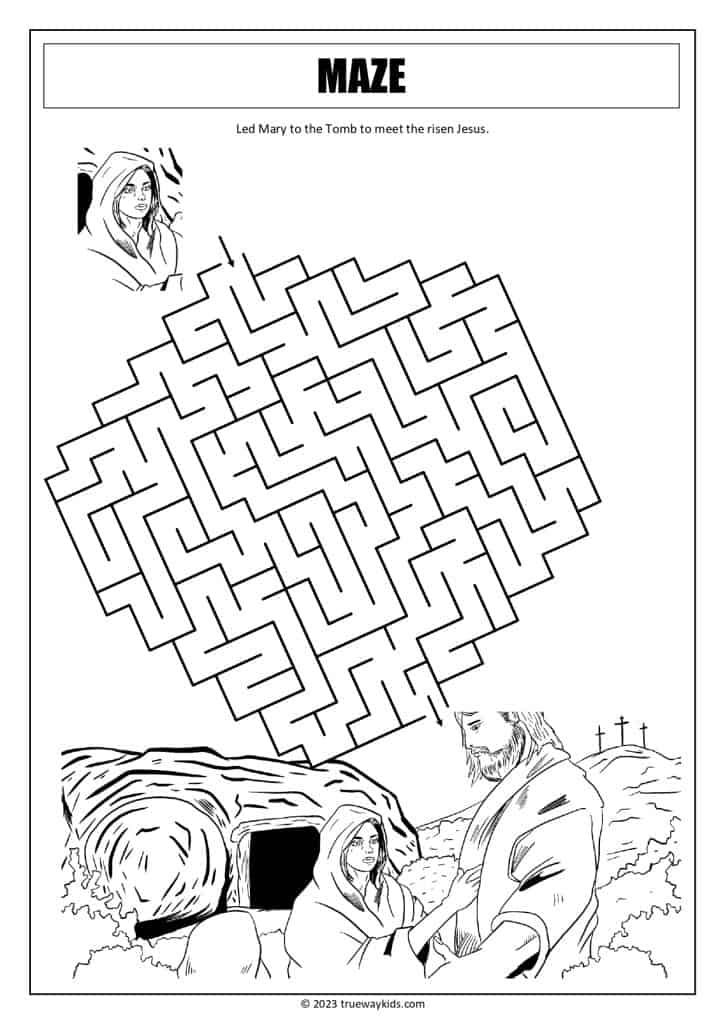
DOWNLOAD THE FREE PRINTABLE LESSON

Translations
View our other Easter Resources here including story trail. other age groups, crafts and much more.



